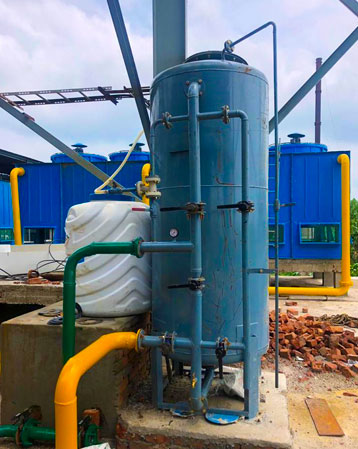
We are leading manufacturer and supplier of effluent treatment plants to our valuable client. It is used for treatment of industrial waste water.

An Effluent Treatment Plant (also known as ETP) is an important waste water treatment process (WWTP) for industries such as pharmaceuticals, textiles, and chemicals where there is a high risk of contamination. It helps in the treatment of both industrial waste water and domestic sewage. In the wastewater treatment process of an ETP plant, contaminants such as organic matter, inorganic matter, heavy metals, oil & grease, suspended particles and so on are treated. Different types of wastewater treatment plants include chemical treatment, biological treatment, a combination of chemical and biological treatment and thermal treatment.
A conceptual approach to treatment includes the removal of suspended particles, dissolved organic matter, and the handling of sludge for disposal. The different processes involved are:
As well as balancing raw effluent from various processing units, the equalization tank collects wastewater in an existing mixed effluent tank and pumps it to an existing aeration tank, which also functions as an equalization tank. Prior to pumping the effluent to the neutralization tank for treatment, the floating aerator homogenizes it.
According to the Bureau of Indian Standards (BIS), effluent should have a pH value of 5.5 to 9.0. To modify the pH of waste water, pH neutralization is used. It is possible to modify the pH of a solution using bases for acidic waste (low pH) and acids for alkali waste (high pH).
In coagulation, liquid aluminiumsulfate is added to untreated water to cause tiny dirt particles to stick together. Through settling and filtration, these particles combine to produce larger, heavier particles that are easily removed.
As water travels slowly, heavy particles settle to the bottom. Sludge is the term used to describe the particles at the bottom of containers.
The process of filtering water involves passing it through layers of sand and gravel to remove particulates. Backwashing is necessary to keep these filters clean.
Before entering the distribution system, water is disinfected. Chlorine is used to disinfect and decontaminate water.
Sedimentation beds collect solids, which are then dried. When the sludge thickness reaches around 300 mm, charging should be discontinued, and the bed should be segregated to allow natural evaporation to dry it.
OUR CLIENTS
Our quality control department strictly verifies & monitors every product at all levels of production to make sure of the quality standards.
Every product of our range is capable of fulfilling client’s essential needs. In addition, we also provide well-timed delivery with economical prices to ensure client satisfaction.
Astech Hydro Systems
P. K. 9, Premier Industrial Complex, Nichi Mangli, Chandigarh Road, Ludhiana –
141123, Punjab, India.
Phone +91-161-3254185
Mobile. +91-98155-35252, +9199143-42223
Mobile. +91-62838-43817, +91-77196-06014
E-mail. info@astechhydro.com
Copyright © 2024 Astech Hydro Systems. All Rights Reserved.
